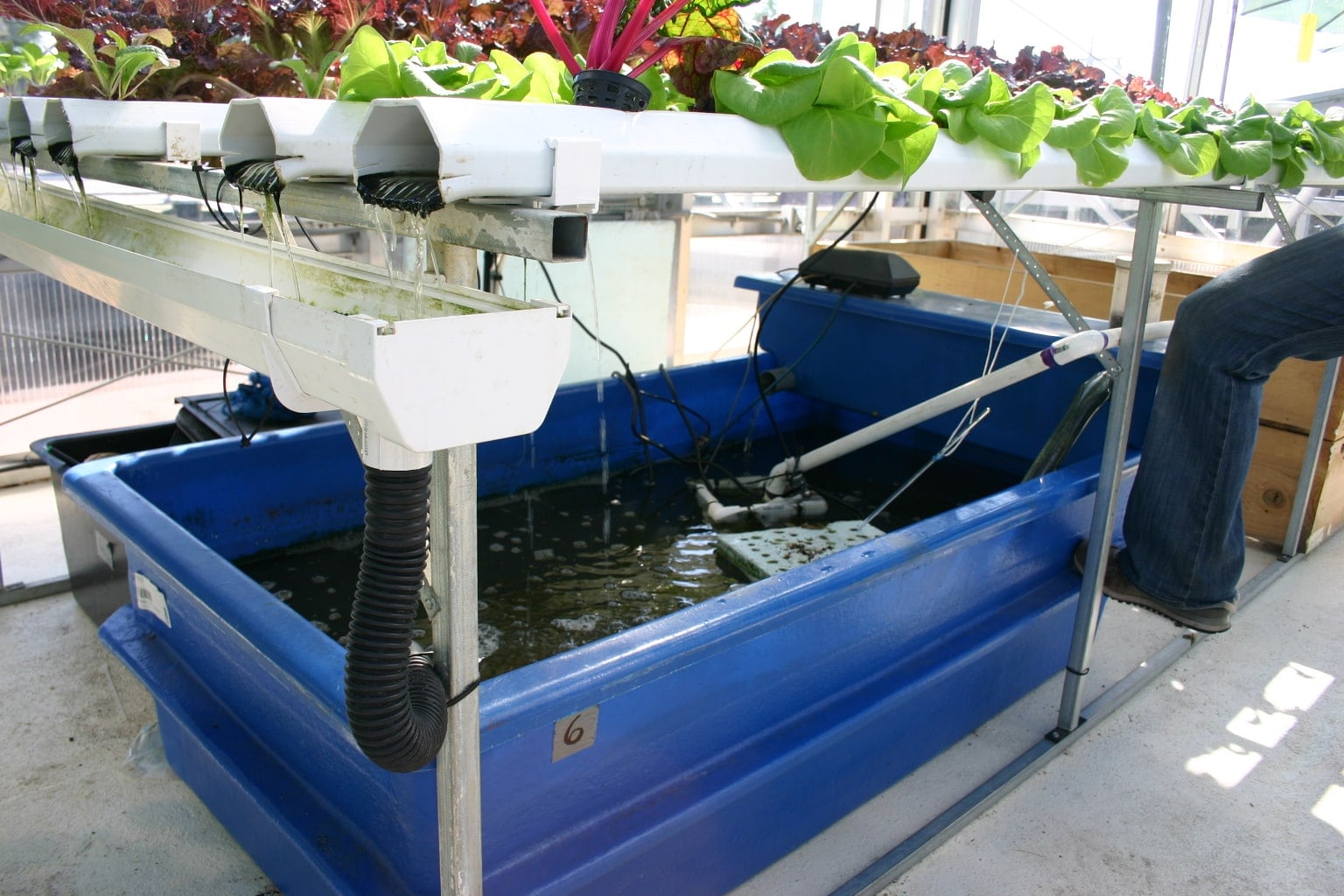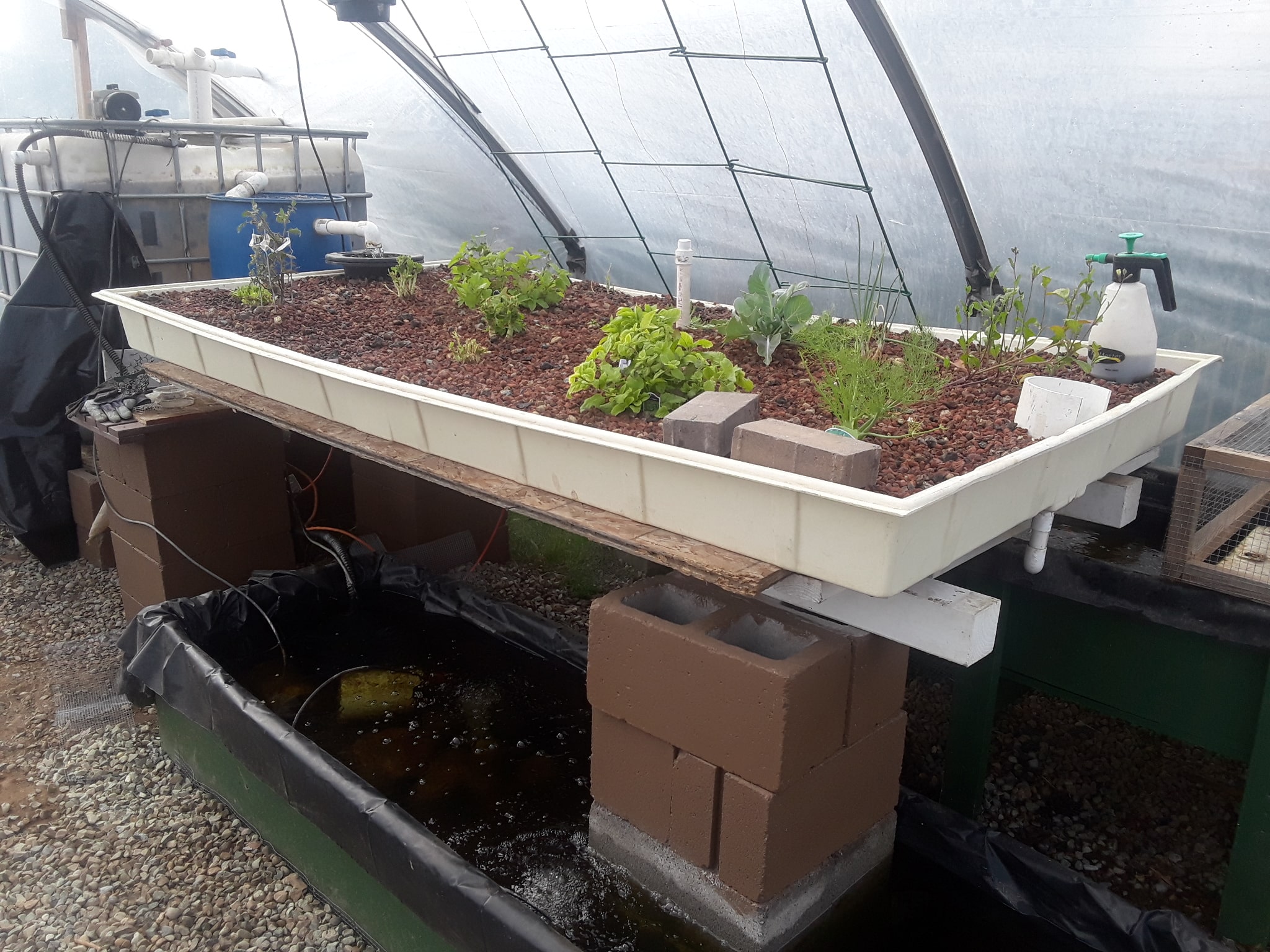 |
| Utilizing Limited Land With Aquaponics (source) |
Utilizing Limited Land With Aquaponics. Human needs for vegetable and animal protein such as vegetables and meat or fish must always be fulfilled.
However, there are times when the food needed suddenly experiences a crisis and prices soar due to extreme seasonal changes and so on, causing farmers and fishermen to experience difficulties in farming.
By utilizing existing land, we can actually grow crops from home. However, the existing land, especially in urban areas, is rarely found because almost all of the land has been turned into a settlement or towering building, if there is, of course this land is very limited.
Aquaponics is the answer to these problems because of the limited land we can still maximize. This method applies an urban farming system, namely aquaculture and hydroponics, which is done by combining ponds containing fish and plants.
 |
| Utilizing Limited Land With Aquaponics |
Actually this method is well known, but there are still few who apply it even though this system provides two benefits at the same time, namely fish farming and planting (mostly vegetables), the water in the pond containing fish (cultivation) will later be streamed. into a hydroponic medium and then used as nutrition. for plants that are on hydroponic media.
So that it does not occur or is zero waste and can minimize the waste of nutrients from fish that are usually not used.
Utilizing Limited Land With Aquaponics
Before knowing how to make aquaponics, it's a good idea to know in advance how the working mechanism, components, and basic needs are so that the aquaponics we make can work optimally.
Fish
The choice of fish that we will cultivate must adjust to the existing place, considering that the existing land is usually very limited because if there are too many fish it will lack oxygen, food, and the stress level of the fish will increase.
In addition, the type of food must be considered so that the fish is easily digested. Common species common in aquaponic systems include tilapia, catfish, salmon, and goldfish as well as some mollusks and crustaceans.
Seeds or Plants
In choosing plants, we should first pay attention to nutritional needs in their growth, because the more nutrients we need, the bigger and more productive the aquaponics we need.
Plants that are usually successfully cultivated in an aquaponic system include leafy vegetables such as kale, mustard greens, lettuce, spinach, tomatoes, chilies and basil as well as fruit plants, namely blueberries and tomatoes.
Tank or Container
The use of the tank must also be adjusted to the existing land. If the land we have is very limited, we can use a vertical aquaponic tank.
However, if the space is wide enough we can arrange it horizontally. The thing that must be considered in an aquaponic system is the availability of water, because the more water the better, so that the fish have room to swim comfortably.
The tank can be made of anything, recycled or not, the important thing is we must always monitor how fast the fish develop and always keep the pond clean not only for the welfare of the fish, but also for the aesthetics of the space where it is made and pleasing to the eye.
Pump
To meet the oxygen needs of the fish, we should install an aerator and a pump to filter the water in the tank or container. The pump must work continuously for 24 hours so that the water in the pond can continue to rotate to the plants. Apart from aerators and pumps, we also need Polyvinyl chloride pipes to drain the water.
Growing media
In this system, the planting media commonly used are rockwool, husk, gravel, and can also use hydrogels because they are easy to rot and decompose and are good for the development of plants with a neutral pH, therefore hydrogels are included in environmentally friendly media.
Sunlight
As we know that plants really need light for photosynthesis, therefore the placement of aquaponics must be in the open.
However, we also have to monitor the temperature that enters because each fish has a maximum temperature limit. Based on my previous explanation, we know how the working mechanism, components, and basic needs of making aquaponics.
Then how to apply this system, therefore, see how to make aquaponics below. The system we are going to create here is the Deep Flow Technique system because this system is easy to build.
Tools and materials needed:
Container or tub for fish pond measuring 3 x 4 m with a minimum pool height of 60 cm to 110 cm, pump machine, Aeration Clean pot Polyvinyl chloride pipe (size to adjust), glue, drill, fish seeds, plant seeds, water.
How to make an aquaponic pond:
Prepare the pond, put the water in the pond, try not to be too shallow so that the fish can move more freely and their development is more optimal.
If the container is plastic or cement, try letting the water sit for a week first to neutralize and remove toxins.
After drying, refill the pond with water, install and place the pump and aeration anywhere as long as it doesn't disturb the fish, after everything is ready, the fish seeds are ready to be spread.
How to make a hydroponic system:
Cut the pipe or gutter (length according to the pool), make a hole with a diameter of 5 cm to insert the net pot using a drill, one hole and the other 15 cm apart.
Make a hole in one end of the lower pipe with a size of ½ inch, place the pipe 5 cm below the large pipe, then glue it tightly so it doesn't leak.
Then at one end of the pipe, put a hole in the top with a size of ½ inch - 1 ich as a place for draining water from the pool to the pipe, tightly close the two holes at the end of the pipe.
The pipe can be placed on top of the pond, after that attach the pipe from the connector to the pump to the pipe through the hole that has been made, before inserting the seeds into the hydroponic Net Pot, the seeds should first be planted as we usually plant (about 1 month).
After that, enter the seeds and planting media into the hydroponic Net Pot so that the plants stand upright, when ready, place the netpot in the pipe hole that has been made and turn on the pump.
The water will appear to flow through the ½ inch pipe and fill the 5 inch pipe with a depth of less than 5 cm, if it is full, the water will be discharged through the drain pipe and flowed into the fish pond, the water flowing into the fish pond will be cleaner, because the dirt is filtered and absorbed by plants.
Conclusion
Maintenance, without proper maintenance, neither the plants nor the fish will succeed. Therefore, plant growth must be continuously monitored every day, water must always flow so that the remaining feed from fish metabolism can always be sufficient for plant nutrients.
 |
| Utilizing Limited Land With Aquaponics |
Apart from plants, density, feeding fish, and checking water quality must always be monitored because stress on fish will occur if there are too many fish in the pond.
Feed the fish with quality feed to get maximum results and if the ammonia or nitrite levels are too high we can dry the pond first, because if it is not dried or cleaned, the ammonia levels can cause the fish to die.
With an aquaponics system, unused land at home can be maximized into a useful activity! By: Ochie











0 comments